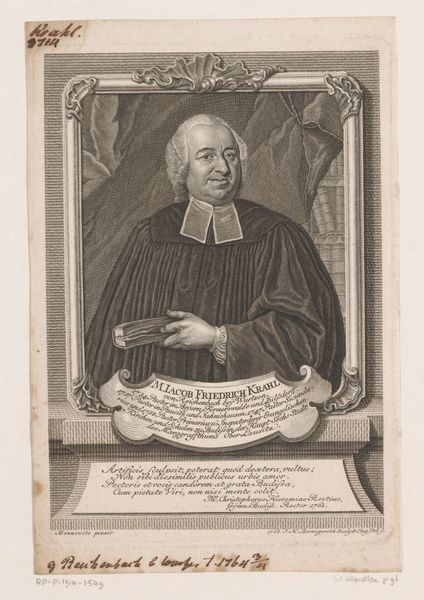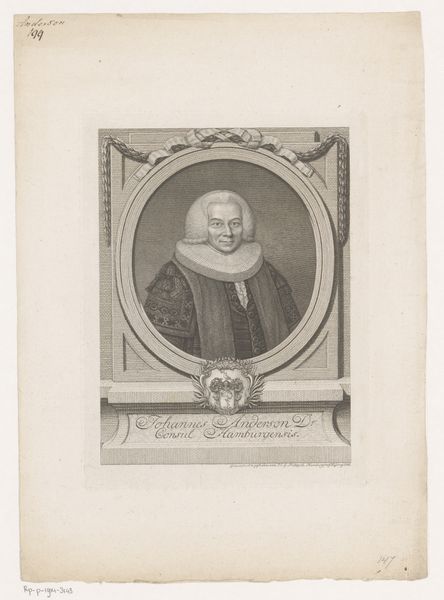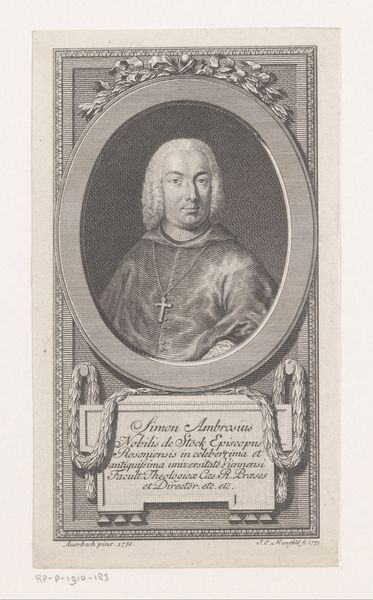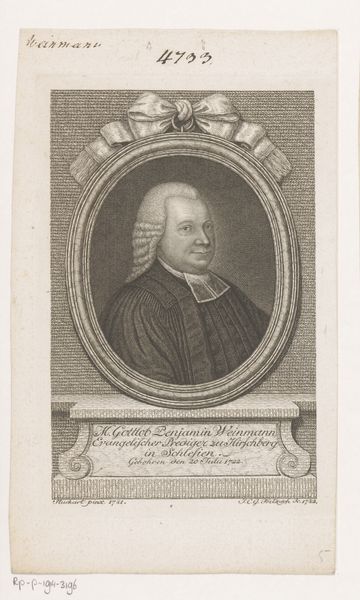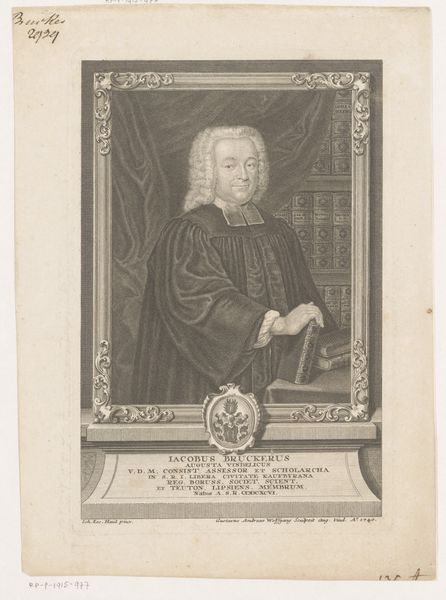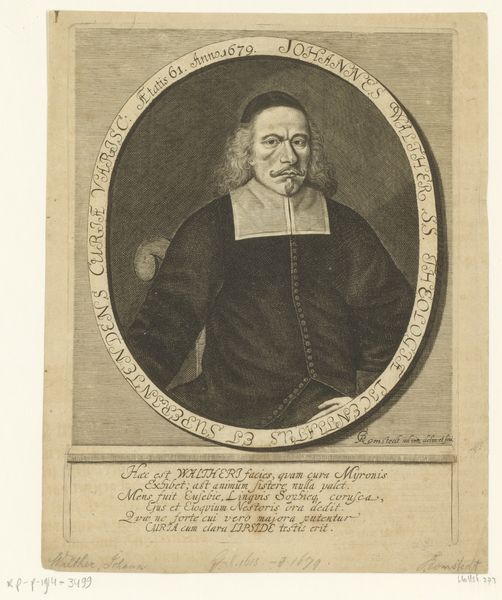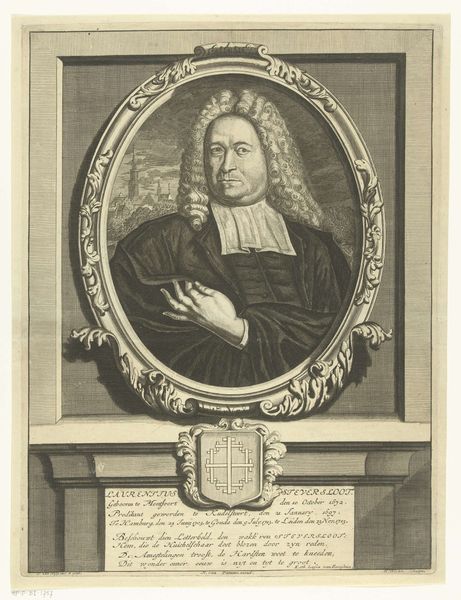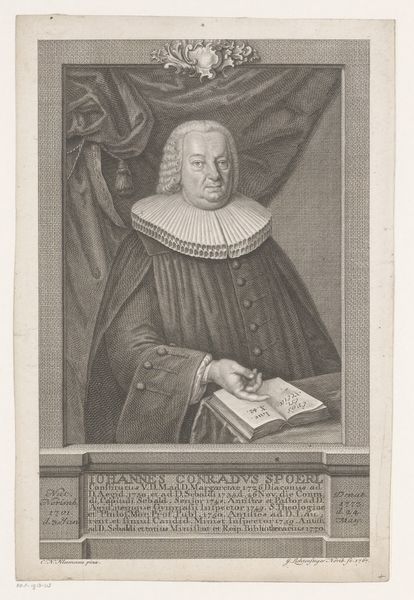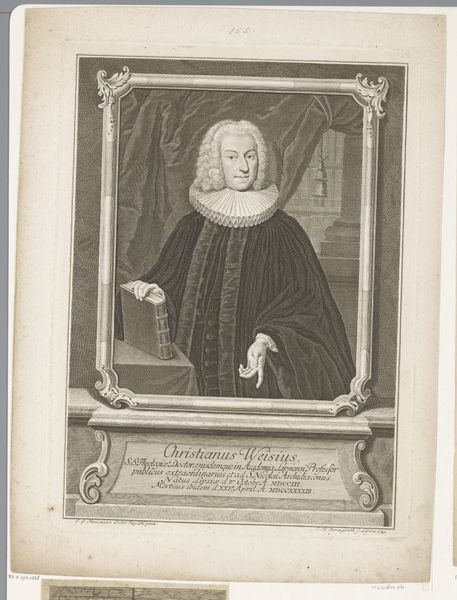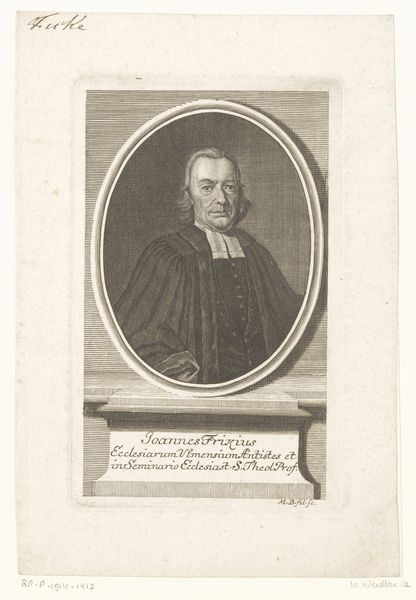
print, engraving
#
portrait
#
baroque
# print
#
old engraving style
#
history-painting
#
engraving
Dimensions: height 333 mm, width 214 mm
Copyright: Rijks Museum: Open Domain
Curator: Welcome. Today, we’re observing Johann Martin Bernigeroth’s 1760 engraving, "Portret van Christian Friedrich Wilisch," currently housed in the Rijksmuseum. Editor: Immediately, I'm struck by the sheer gravity of the subject, this Wilisch fellow. The portrait style, the oval frame – it all projects an air of profound importance. Almost intimidating, actually. Curator: Yes, that gravitas is skillfully achieved through the detailed line work and the use of Baroque conventions. Notice how the oval frame and elaborate cartouche containing Latin text enhance the overall sense of formality and status. These visual elements work to amplify Wilisch's presence. Editor: Baroque, yes, that explains the, shall we say, *flourishes*. It’s interesting how the precise, almost clinical, details contrast with the subject's slightly… human expression. Like he’s just stifling a yawn mid-sitting. Curator: A curious interpretation. I would suggest the delicate gradations of shading, meticulously etched, reveal Bernigeroth's mastery of engraving techniques. Look closer. The textures—the fabric of the robe, the wig, even the subtle modelling of the face—they all contribute to a realistic portrayal. The print medium itself suggests the democratization of images and the rise of the middle class at the time. Editor: Hmm. Democratization by stern portraiture. Maybe a bit like LinkedIn profile pictures for the 18th century elite? I see your point about the technique though, especially the way the light catches the folds of his robe. There is beauty there, even in the rigor of it all. And OK, the engraving does make the portrait replicable, more widely accessible... for a price I imagine. Curator: Indeed. What we're examining isn't just an image of a man but a carefully constructed symbol of authority and knowledge during the Enlightenment. It also reminds us of the growing prominence of the printing press, and the associated communication that reshaped society. Editor: So, a visual statement of power, meticulously rendered. I came expecting staid formality, but it has layers to appreciate and a story of social shift at the very least, to make its consideration much more interesting than its presentation, at first glance. Curator: Precisely. Thank you for your insight. I think we have successfully highlighted the multifaceted dimensions within this remarkable print.
Comments
No comments
Be the first to comment and join the conversation on the ultimate creative platform.
